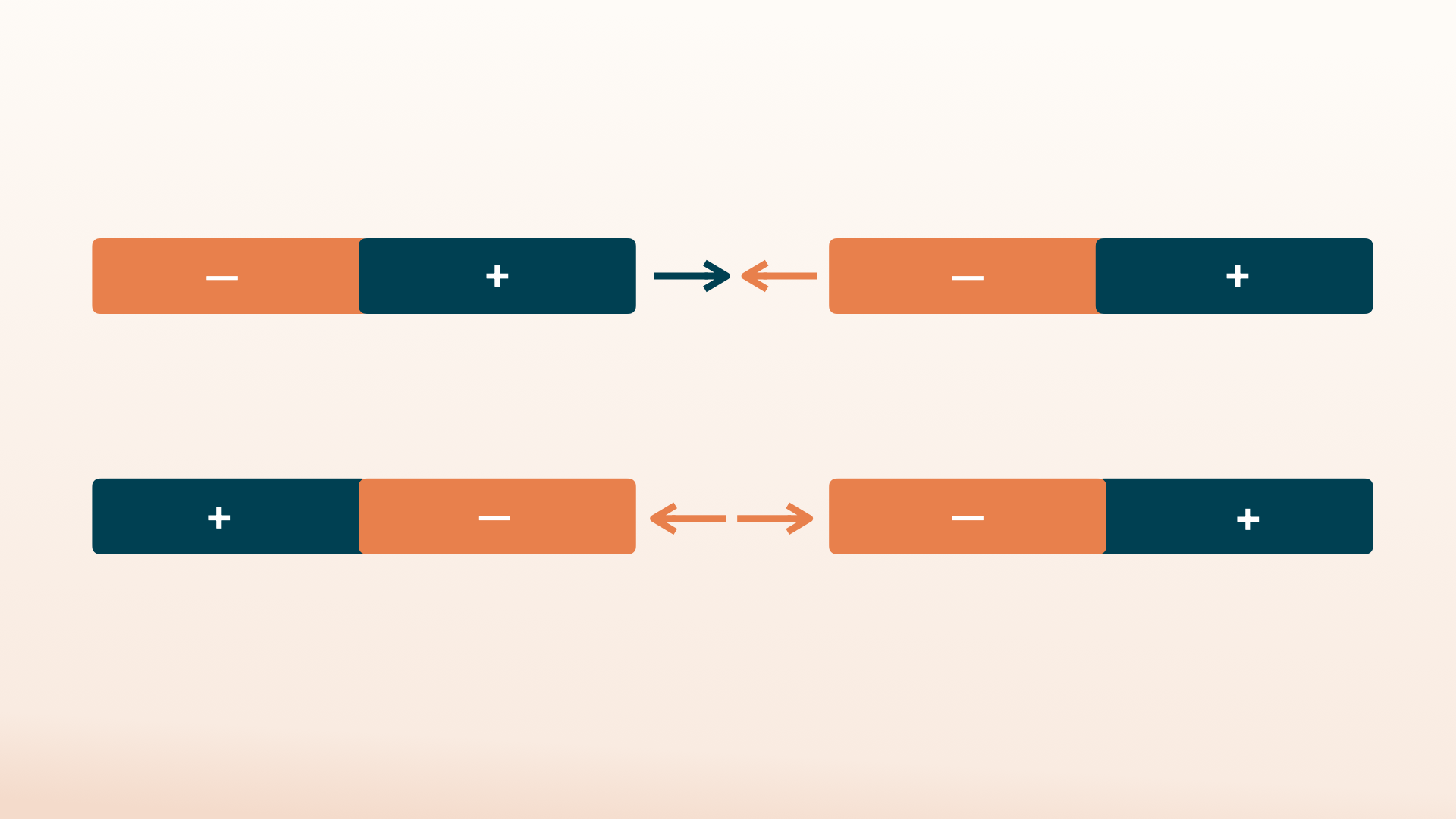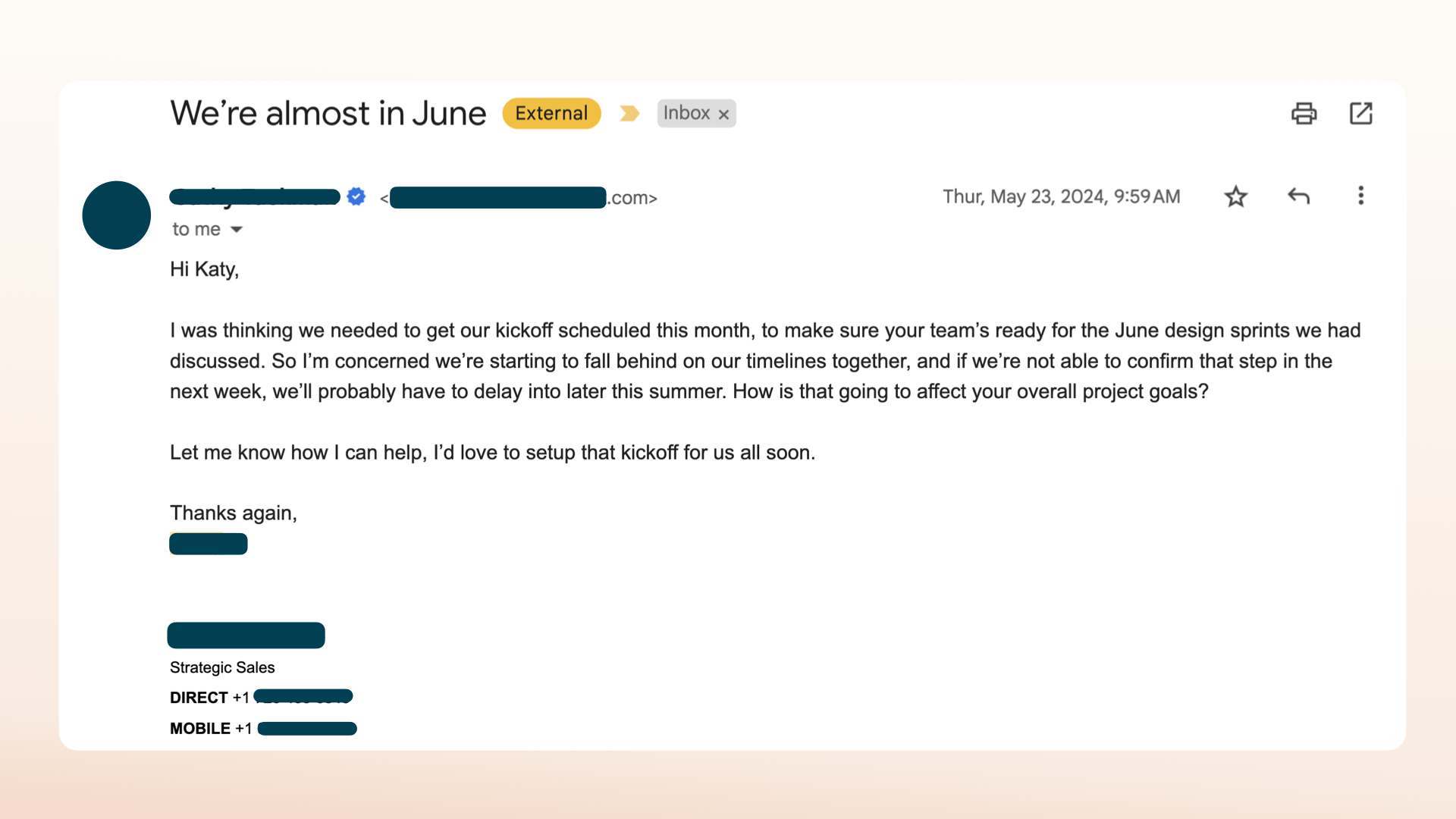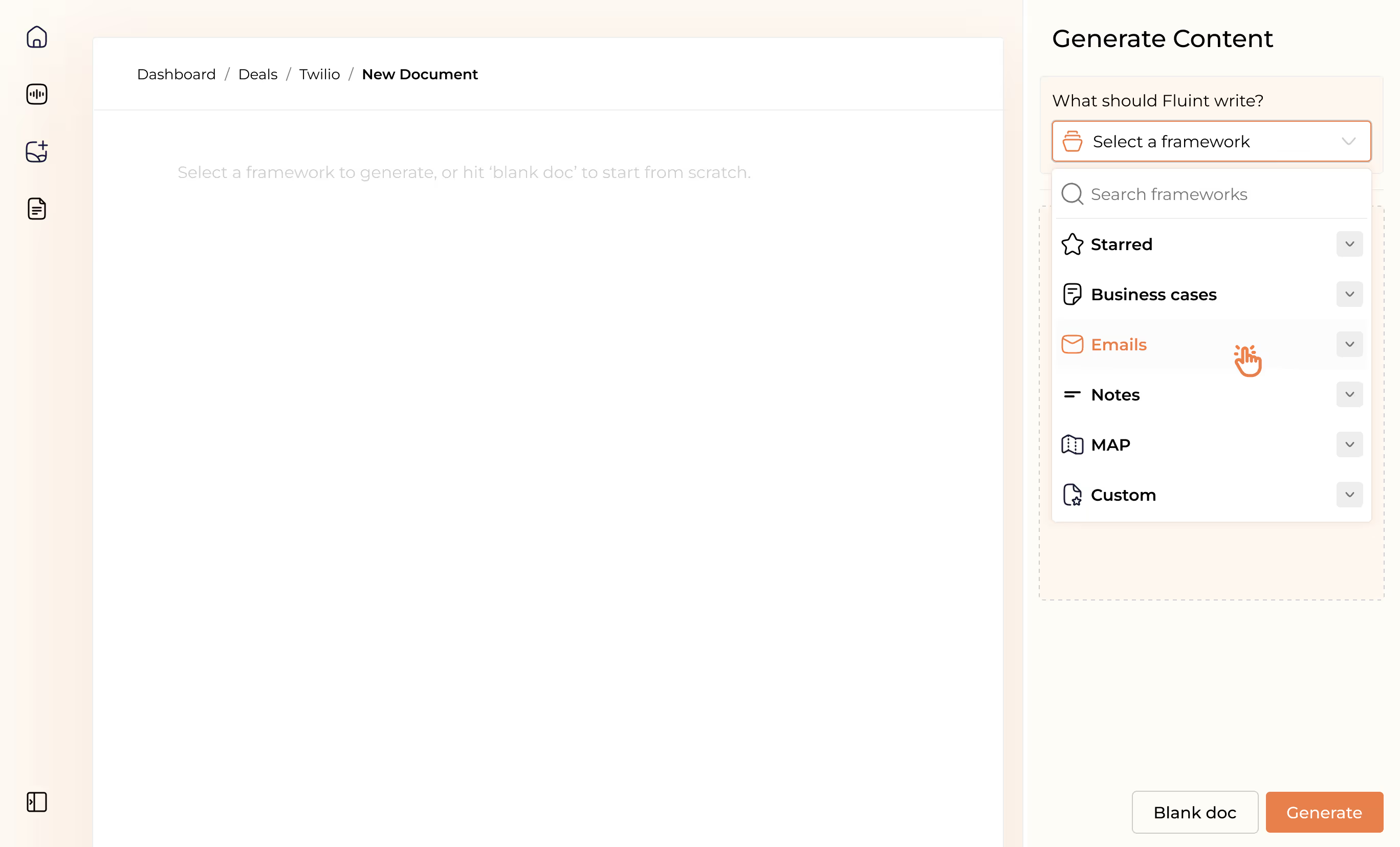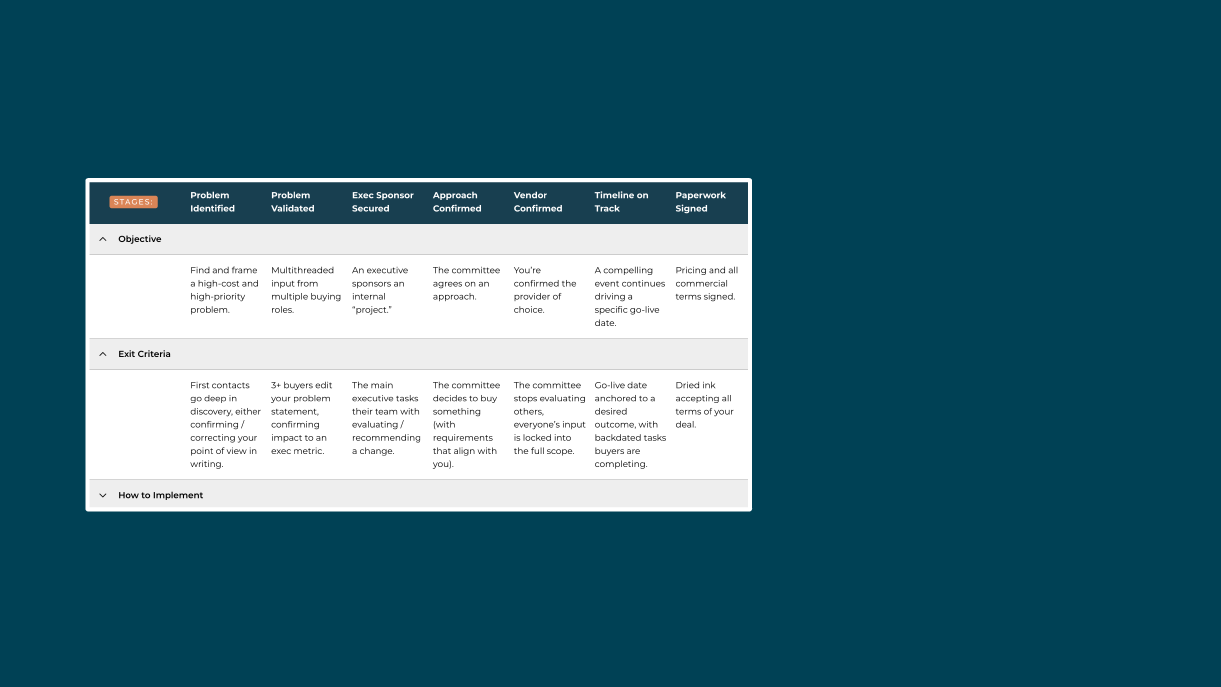How to Write “Magnetic” Mid-Funnel Emails that Fight Slipped & Stalled Deals


Here’s the funny thing about deals that stall mid-funnel:
I’ll bet you have a completely logical reason for why the buying team should have kept moving forward.
- You found a legit problem.
- You “quantified the impact.”
- Even multithreaded in a team of contacts.
You did all the right things.
Discovery, demos, built out a proposal… but then, that’s when the buying team went dark. Ghosted, as they say.
So when that sure-thing starts to slip, what do you do?
Well, here’s what the average seller does.
They send a follow-up email reminding their main contacts about their timeline. That they’re behind, and they’re reaching out to help get them back on track.
It’s a fine start.
But after a few more calls and emails, and still nothing? What’s next?
Writing Mid-Funnel Emails like it’s Middle School Science Class
Remember playing with magnets in science class? You’ll probably remember the classic saying “opposites attract.”
- The positive side of a magnets sticks to the negative side.
- Two negative sides of a magnet repel each other.

The same idea applies here.
Except, instead of “poles” with a positive or negative charge, we’re talking about emotionally-charged messaging.
Because most of the time, that’s the issue when a perfectly-logical deal slips. An emotional blocker got in the way, like:
- Change resistance kicked in.
- Drama got in the way of the math problem.
- The fact we typically avoid anything that makes us uncomfortable. (Am I right?)
Which brings us to a few questions:
- What’s the main negative emotion blocking momentum? If you were to label that emotion with one word, what is it?
- What’s one word that describes the opposite, positive emotion?
- What message can you write to create that positive emotion?
If you can answer these three questions with a thoughtful response?
You’re more than halfway to a follow-up email that’ll jumpstart your deal faster than AAA roadside assistance.
Mid-Funnel Email Rewrite: Before & After Case Study
Here’s an example.
Using a “real life” follow-up email a strategic seller from a major design software sent me from inside the Fluint Slack community last week.
She’s been working on a deal that had a solid champion and some real momentum — until it didn’t.
The customer had a “compelling event” with a specific timeline, and her main champion, Katy, built up support from the product team all around. But then? Silence.
So, here was her next follow-up email:

Which she wrote with her manager, who encouraged her to:
- Use “collaborative” language like “our” kickoff and “we” discussed.
- Ask a question about “impact” of missed timelines.
- Reference the June design sprints.
All well-meaning advice.
But can you spot the big issue here?
It’s a “repelling” email, because the main emotion this email creates is “you’re falling behind.”
And when I asked her what Katy was likely already feeling?
Overwhelmed.
Katy’s a rising star, respected, and in demand inside her org. Which made her a solid champion to start with.
Project requests are always pressing on all sides, which is both stressful and straight up overwhelming at times.
So, what happens when you tell an overwhelmed person they’re falling further behind?
They ignore you.
It’s how they cope, and stay sane.
I mean, heck. I’d do the same. Wouldn’t you?
(Sidenote: yes, even “true” champions will ignore sellers who are adding to an already stacked and stressful worklife. Champions aren’t champions because they’re always responsive to you, regardless of your message.)
So, what’s the opposite of overwhelmed?
Calm. On top of it, and in control.

Which is exactly the emotion we went for in our re-write. After we answered the three questions we listed above like this:
- Overwhelmed.
- On top of it.
- Visible progress against goals, a team who’s already hard at work around you, creating a sense of calm.

Did you catch the shift in language?
- “Falling behind” becomes “ahead of the game.”
- “If we’re not able to confirm” becomes “we’re already ~45% done.”
- “How is that going to affect” becomes “has anything changed?”
My rewrite isn’t perfect. But it’s definitely more magnetic.
And it got a same-day reply, with a follow-up call for the next day.
Looking at these two emails:
- Which of the two would you reply to?
- Which of the two are you writing?
Think on that. And if you’re looking for a little extra help writing more thoughtful emails?
We’ve built a whole set of mid-funnel email frameworks into the platform.
So you can let Fluint write the first draft, to spend more of your own time and creativity applying practices like this one.
FAQ's on:
Why stop now?
You’re on a roll. Keep reading related write-up’s:
Draft with one click, go from DIY, to done-with-you AI
Get an executive-ready business case in seconds, built with your buyer's words and our AI.

Meet the sellers simplifying complex deals
Loved by top performers from 500+ companies with over $250M in closed-won revenue, across 19,900 deals managed with Fluint

Now getting more call transcripts into the tool so I can do more of that 1-click goodness.



The buying team literally skipped entire steps in the decision process after seeing our champion lay out the value for them.


Which is what Fluint lets me do: enable my champions, by making it easy for them to sell what matters to them and impacts their role.








